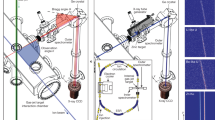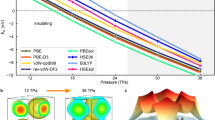Abstract
IN a paper on the precise measurement of the critical potentials of gases (Proc. Roy. Soc., 107–291, 1925) Mr. E. G. Dymond finds that the difference between the first and second kink in the current potential curve in helium is 20.9 volts and not 20.55 volts as one would expect if the first kink corresponds to electrons which have caused the transition 1S–2s (type A), and the second kink to electrons which have caused two transitions 1S–2S and 1S–2s (type BA). In attempting an explanation he assumes that in his apparatus the second kink is due to the transition BB.
This is a preview of subscription content, access via your institution
Access options
Subscribe to this journal
Receive 51 print issues and online access
$199.00 per year
only $3.90 per issue
Buy this article
- Purchase on Springer Link
- Instant access to full article PDF
Prices may be subject to local taxes which are calculated during checkout
Similar content being viewed by others
Author information
Authors and Affiliations
Rights and permissions
About this article
Cite this article
GLOCKLER, G. Double Impacts by Electrons in Helium. Nature 115, 909–910 (1925). https://doi.org/10.1038/115909b0
Issue Date:
DOI: https://doi.org/10.1038/115909b0
Comments
By submitting a comment you agree to abide by our Terms and Community Guidelines. If you find something abusive or that does not comply with our terms or guidelines please flag it as inappropriate.



